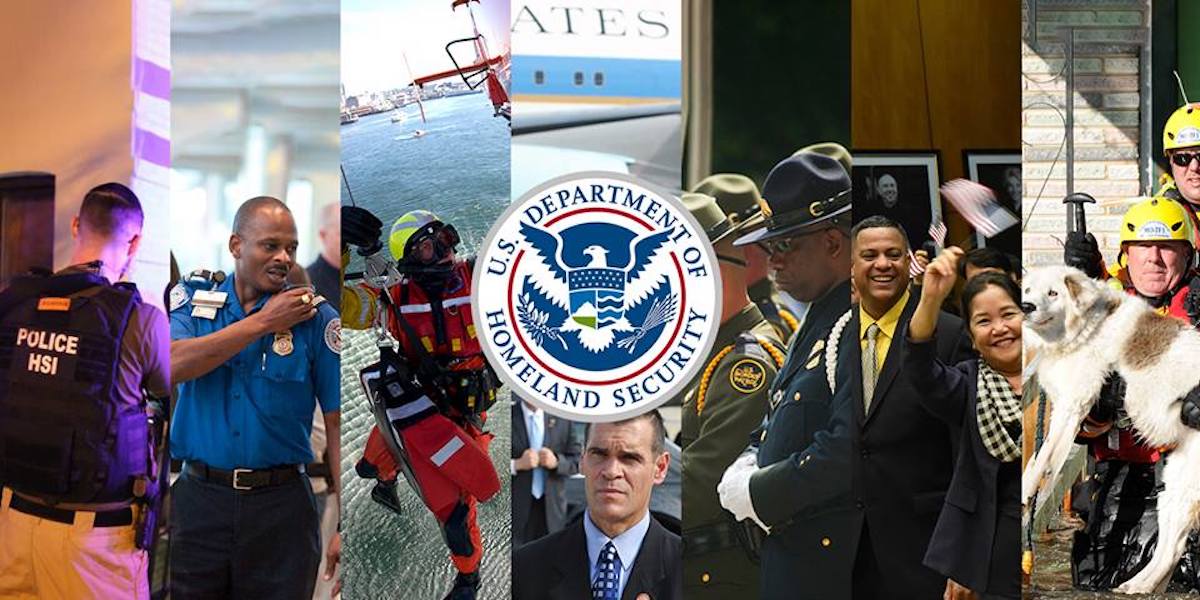While the United States has not experienced a major terrorist attack since September 11, 2001, there have been continual terrorist attacks around the globe. According to the National Counter Terrorism Centers (NCTC) Worldwide Incident Tracking System (WITS)[i], during 2004 there were only five terrorist incidents in the US (accounting for one injury). Conversely, during the same time period there were 3,192 terrorist incidents worldwide, resulting in 6,060 deaths and 16,091 wounded victims.
| Police | Total | |
| Incidents | 590 | 3192 |
| Fatalities | 1080 | 6060 |
| Wounded | 1370 | 16091 |
| Table One[ii] | ||
During 2004, 1,080 police officers were killed by terrorists and another 1,370 police officers were wounded by terrorists outside the US. Table one represents the number of officers killed and wounded versus the total number of people killed and wounded. The data seems to suggest that police officers who are victims of a terrorist act are much more likely to be killed (as opposed to wounded) than civilians who are victims of a terrorist act.
Police officers becoming victims of terrorist attacks appear to be a world-wide phenomenon. Table two represents a breakdown of those attacks by region. The information indicates, as we know, the Middle East and Southeast Asia are particularly dangerous areas. The third column of table two shows the percentage of police officers who are victims of terrorism. It is interesting to note that while police officers on average are targets of terrorism roughly 18.5 percent of the time world-wide, they are slightly more than 11 percent of the total number of victims.
|
Terrorist Incidents 2004 by Region |
|||
| Region | Total | Police | Percentage |
| South Asia | 1043 | 207 | 19.80% |
| Africa | 64 | 8 | 12.50% |
| Central/South America | 90 | 9 | 10% |
| East Asia Pacific | 265 | 62 | 23% |
| Eurasia | 205 | 70 | 34% |
| Europe | 319 | 43 | 13% |
| Middle East/Persian Gulf | 1196 | 190 | 15.80% |
| North American/Caribbean | 10* | 2 | 20% |
| Total Incidents | 3192 | 591 | 18.50% |
| *The two incidents involving police officers in the North American/Caribbean region occurred in Haiti | |||
| **Data developed from the NCTC, WITS Table Two | |||
Perhaps, though police officers may be targeted by terrorists, their training and/or equipment may prevent them from becoming casualties.
Are Police Officers Targeted?
The data from outside the US seems to indicate that police officers are specifically targeted by terrorists. Like the US, many countries rely on internal police organizations to pursue criminal investigations against terrorists. Simply put, the data indicates that police officers worldwide are on the front line in the War Against Terror. They are the ones making arrests, guarding critical facilities and responding to the scenes of terrorist acts. Indeed, a closer look at terrorist acts reveals that among the incidents involving police officers, fatalities occur during attempts to arrest terrorists[iii], guard duty of critical facilities,[iv] response to situations[v], the conducting of routine operations, such as traffic control[vi], and off-duty ambushes[vii].
It also appears that police officers may be targeted because of their occupation. First, they are one of the most visible forms of civilian government. Terrorists seeking to strike at a government may view police officers as symbols of that government. Perhaps more importantly, the public views police officers as symbols of order and peace. Recall that the definition of a terrorist act involves striking at non-combatants in order to generate fear. It may be that police officers are specifically targeted because citizens become even more fearful when they see the people who are armed and charged with the responsibility of protecting the community fall victim.
Although US policing has not experienced anything close to the carnage of our brothers and sisters worldwide, it may be instructive to use the information from those attacks to attempt to determine likely circumstances and weapons that would be used in an attack on police officers in other regions, then review tactics designed to increase officer safety. Table three classifies the attacks on police officers[viii]. Table four outlines the weapons used by the terrorists.
| Type of
Incident |
Number
of Incidents |
Killed | Wounded |
| Bombed Vehicle | 3 | 8 | 6 |
| Station Attacked | 106 | 381 | 452 |
| Ambushed | 32 | 68 | 63 |
| During Enforcement | 3 | 1 | 17 |
| Off-duty | 43 | 38 | 16 |
| Secondary Device | 7 | 4 | 32 |
| Other/Unknown | 396 | 580 | 784 |
| 590 | 1080 | 1370 | |
| **Data developed from the NCTC, WITS Table Three | |||
Bombing Police Vehicles
According to the NCTC, on September 3, 2004, in Khaki Forest, Giridih District, Jharkhand, India, militants detonated a bomb under a police vehicle, killing five police officers and wounding three others[ix]. In the early 1970s certain domestic terrorist groups (or militant groups as they were called at the time) detonated bombs that were either placed on the ground underneath or attached to the undercarriage of the police vehicle. One attack involved members of a terrorist group taping a hand grenade to the gas tank of a patrol vehicle while the officers were at lunch. An improvised device designed to pull the pin would have been activated by the officers driving forward from their parking spot. The officers lives were saved because they drove backward out of the parking spot, unaware of the device[x]. That incident led to the spread of the simple tactic of officers looking under their vehicle before they entered it any time they were away from the vehicle. This tactic led to the discovery of other devices and is a simple way to foil this type of attack.
Station Defense
According to the NCTC, on August 20, 2004, in Semdinli, Hakkari Province, Turkey, gunmen opened fire on a Turkish police station, injuring two police officers[xi]. Police stations have also been bombed[xii] and attacked with military style weapons[xiii]; however, the most prevalent type of weapon identified in all attacks was firearms (35%), followed by explosive devices (34%).
All agencies should consider implementing station defense plans and reviewing their station routines and structure for weaknesses. On how many summer nights have you found the back door to the station propped open? Can your desk officers be seen through a plate glass door from the street? How many police officers view desk duty as vacation from the street and do not wear their Sam Browne or other duty equipment? During the 1960s and 1970s, police stations in the US were attacked by terrorist groups. Revisiting the tactics and procedures implemented during those times may be a good starting point for improving station defense.
As we noted in previous articles, it is important to view our preparation and planning for terrorist incidents as all-hazards planning. The construction and remodeling of police stations should be conducted under the umbrella of all-hazards planning that includes potential terrorist attacks. A good starting point may be to conduct a Needs Analysis of your station. Recall that a Needs Analysis involves the determination of likely events, the state of current preparation and a determination of needs to completely prepare. What could happen and what could you do now to improve your response?
Ambush
According to the NCTC, on August 4, 2004, in Patnos, Agri Province, Turkey, unidentified gunmen fired at a police vehicle, killing one police officer and injuring one other[xiv]. It is clear from the data that ambush and station attack are the two primary terrorist incidents aimed at police officers. According to the NCTC data, ambushes against police officers overseas generally take on two forms: An explosive device is detonated as the police officers drive by, or gunmen assault the vehicle from positions of concealment. In the US, we should consider two additional variations on the ambush. The first variation is a false radio call that draws police officers into an ambush zone. The second variation is a terrorists committing a minor traffic violation in order to attack the officer during the stop.
Countering ambushes involves a re-examination of basic field tactics. During radio calls, officers should avoid parking in front of the location, be mindful of people who may be acting as lookouts, etc. For traffic stops, officers should attempt to select the location of the stop, position their vehicle tactically and be mindful of furtive movements by the traffic violator. Countering all ambushes means officers should know the difference between cover and concealment, practice moving into the cone of fire and move quickly away from the police vehicle because it is likely to draw fire.
During Enforcement
According to the NCTC, On February 17, 2004, in the morning, in the Zavodskoy District, Groznyy, Chechnya, Russia, a bomb exploded during a search operation by OMON (Special Forces Police Detachment) officers, injuring the deputy commander[xv]. It is interesting to note that during enforcement operations like serving warrants and making arrests, police officers overseas seem to receive fewer injuries[xvi]. A likely reason is that they are in a heightened state of awareness and have pre-planned the operation. Both are extraordinarily valuable officer-survival tips. Training, awareness and preplanning are probably the best prevention. Indeed, when coupled with solid field tactics and well-maintained equipment, a police officers survivability surely increases.
Off-duty
According to the NCTC, WITS, on June 17, 2004, in the Arghakhanchi District, Nepal, gunmen fired upon a group of out-of-uniform police officers shopping at a local bazaar, killing two officers and wounding two others[xvii]. In another incident reported by the NCTC, WITS, on November 2, 2004, at night, in the village of Litter, Pulwama, Kashmir, India, armed militants shot and killed a police officer in his home[xviii]. Being off-duty should be the perfect undercover assignment. You blend in completely with everyone in your personal community. Avoiding wearing insignias on your clothing, appropriately concealing off-duty weapons and ensuring that your private data is protected are essential steps in avoiding off-duty conflicts. More importantly, before taking action, off-duty police officers should strongly consider that they lack the support and equipment available while on-duty; and that they are likely to bear the additional concern of exposing family and friends to danger.
Secondary Devices
According to the NCTC, On January 15, 2004, at approximately 3:20 PM, in Karachi, Pakistan, two bombs exploded within 15 minutes of each other at the Pakistan Bible Society building. The first blast damaged the building but caused no casualties. Later, a car bomb exploded, injuring three police officers and 12 civilians who had gathered to inspect the damage from the first blast and damaging 18 nearby vehicles[xix]. Secondary devices are intended to kill or wound first responders. A post-blast scene is NOT a safe scene. In addition to evidence collection and preservation and any unsafe conditions (like damaged structures and hazards chemicals), police officers must be mindful of secondary devices. Considerations range from suspicious, undamaged vehicles to the use of the police radio, which might accidentally detonate a device.
Conclusions
By examining and debriefing terrorist events overseas we are able to identify training, education and equipment needs in our own agencies and communities. News from overseas is an opportunity to ask What if that happened here? In our next article, we will journey further into homeland security and terrorism by examining how technology can supplement solid tactical training and increase your counterterrorism skills.










